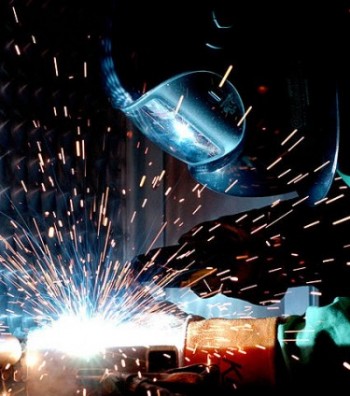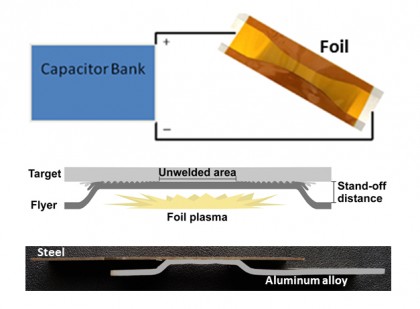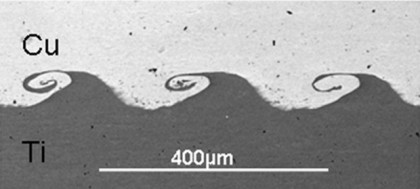
Researchers develop new welding technique with ‘huge’ auto industry implications
by Canadian Manufacturing.com Staff

Process strengthens bonds 50 per cent, cuts energy usage 80 per cent

The new technique uses an electrical pulse to weld materials together and could replace other processes. PHOTO: United States Air Force, via Wikimedia Commons
The process attempts to reconcile one of the major problems in modern materials design. As advances in alternative metals development have taken place, new welding technologies have not kept pace, resulting in numerous next-generation materials that are “unweldable” by traditional means.
The new technique, known as vaporized foil actuator welding, aims to change that. It was recently outlined by Ohio State metal science and engineering professor, Glenn Daehn, at the 2015 Materials Science & Technology conference in Columbus. Daehn’s team has been working on the process for more than a decade and has amassed more than half a dozen patents.
“Materials have gotten stronger, but welds haven’t,” Daehn said in a statement. “We can design metals with intricate microstructures, but we destroy the microstructure when we weld [them]… With our method, materials are shaped and bonded together at the same time, and they actually get stronger.”

A diagram showing vaporized foil actuator welding. PHOTO: Courtesy of Glenn Daehn, Ohio State University
In the VFA process, a high-voltage capacitor bank creates an electrical pulse inside a thin piece of aluminum foil for a very short length of time. Within microseconds the foil is vaporized and a burst of hot gas pushes two pieces of metal together at speeds approaching thousands of miles per hour.
Unlike in resistant spot welding, in which manufacturers force an electrical current through two pieces of metal to melt them and form a bond, the new technique does not melt the two metals. Instead, it heats the metal above its sublimation point before it has time to melt, turning it directly into a gas. By leapfrogging the melting stage, the VFA technique can form bonds between the two metals without weakening the original materials like in spot welding. The resulting weld is 50 per cent stronger. Because of the very brief electrical pulse, it also uses a fraction of the energy, consuming 80 per cent less energy than spot welding.

Microscope view of copper (top) welded to titanium (bottom) using a new technique. PHOTO: Courtesy of Glenn Daehn, Ohio State University
So far, the engineers have successfully bonded different combinations of copper, aluminum, magnesium, iron, nickel and titanium. In what could be an enormous step forward for the auto industry, they have also created “strong bonds” between steel and aluminum alloys. The researchers noted high-strength steel and aluminum join together with weld regions that are stronger than the base metals.
As a next step for the technology, Daehn and his team now intend to join with manufacturers to work on further developments and commercialization.